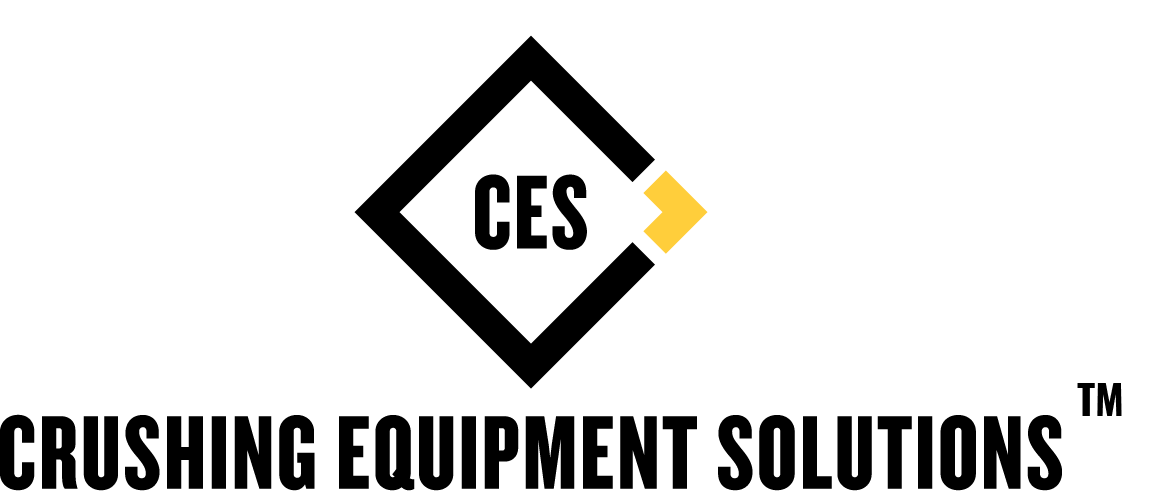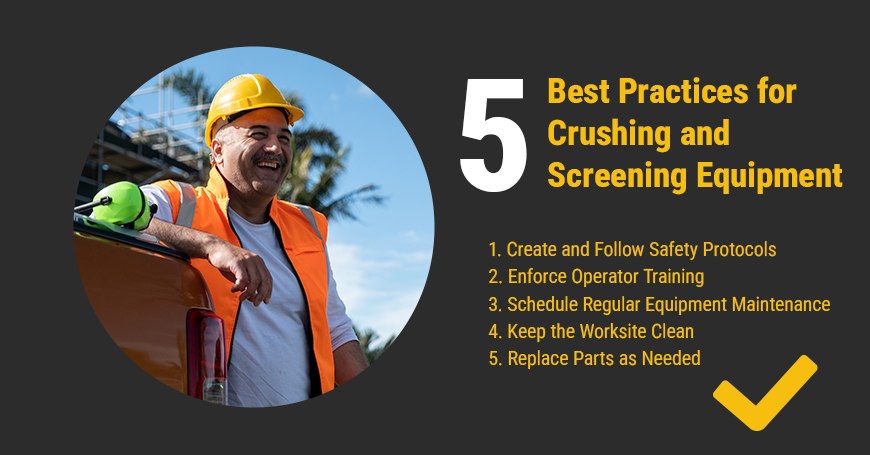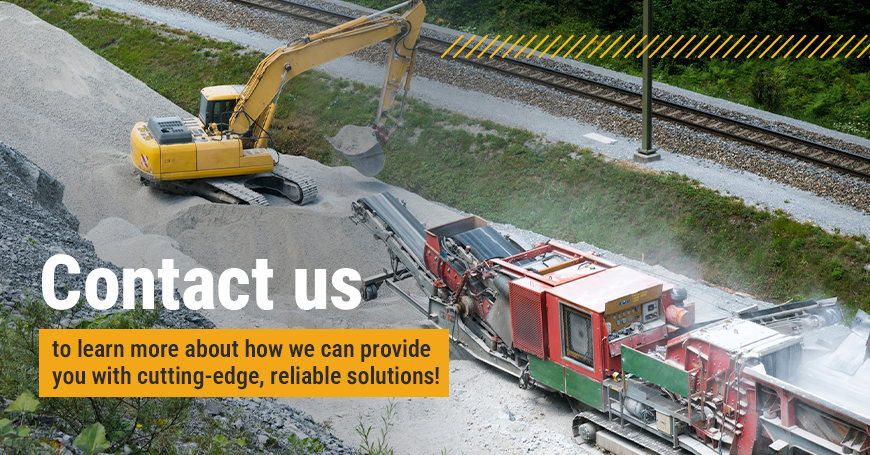Working with crushing and screening equipment helps you maximize your site productivity, but using this machinery comes with certain safety risks. Large crushing and screening equipment can pose a safety threat to workers, especially when poorly maintained and operated. Establishing and enforcing best-use practices for this equipment will help you keep your work site and employees safe and productive.
In general, knowledge refreshers, inspections and durable equipment can help you maintain the best worksite conditions. Keeping an eye on your equipment and operators will also help you protect workers from harm while streamlining production. Use the best practice tips below to create a safer workplace while using crushing and screening equipment.


